Who Gets the Astonishing Impact of a Ming Dynasty Imperial Concubine’s On-screen Debut?

In the TV drama The Glory, Concubine Miao makes a striking entrance wearing a python – patterned robe, exuding incredible presence. Who said Ming dynasty clothing is only about understated luxury? The grandeur of Ming – dynasty ceremonial attire is truly spectacular enough to steal the spotlight. And it’s not just the python robe; the long tassels hanging from the hairpin she wears are especially unique. What exactly is this accessory called? And on what occasions is this kind of jewelry typically worn? Let’s start by explaining her Hanfu styling first.
I. The Breathtaking Python Robe
The ceremonial garment worn by Concubine Miao is a “python robe” adorned with python patterns. It features a round – collar long jacket style, paired with a stand – collar inner jacket. She accessorizes with hairpins, hair ornaments, and a decorative headpiece, and wears a horse – face skirt on the bottom. This entire ensemble is extremely solemn and represents a high – level ceremonial dress for titled women.
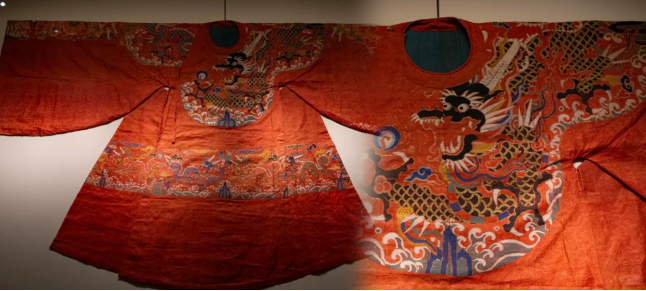
The “python robe” can be worn by both men and women. It was a bestowed auspicious Ming Dynasty hanfu, equivalent to the rank of the first – grade official. The python robe housed in the Confucius Museum features python patterns that resemble dragons, with each having four claws. This style of bright red round-collar robe is also regarded as a representative of auspicious attire.
During the Hongwu period of the Ming Dynasty, officials from the Ministry of Rites put forward the theory of the Five Elements in relation to clothing colors, believing that the Ming Dynasty belonged to the element of fire, and thus red should be favored. Therefore, wearing red was particularly required for ceremonial garments on certain occasions.
Here, if we magnify this piece of hanfu, the original artifact, we can see that the local patterns are exquisitely woven. In fact, the craftsmanship involved is extremely difficult. We truly have to admire the wisdom of our Chinese ancestors.
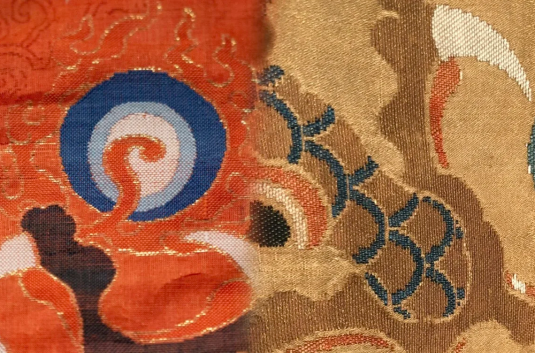
II. Luxurious Head Ornaments
There is also this kind of accessory on her head called a “tiao pai (挑牌)”. It is usually composed of a long string of bead knots in different shapes, and a pair of them are worn symmetrically on the left and right. Generally, only empresses, imperial concubines, or titled women are eligible to wear it. The crowns and accessories worn on different occasions also vary. The things hanging down from the “tiao pai” are called “zhu jie” (珠结). As the name suggests, they are knots made by threading beads into various shapes with threads for decoration.
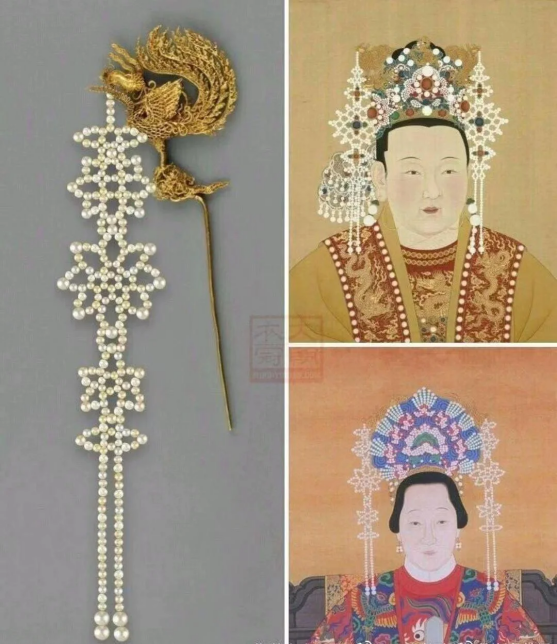
It should be noted that many people think that the “tiao pai” is just two strings of beads hanging on the crown. In fact, the “tiao pai” (it might be more appropriate to call it a “tiao pai hairpin”) is a complete hair accessory, consisting of two parts: one part is a gold hairpin (mostly in the shapes of a kingfisher head hairpin, phoenix head hairpin, dragon head hairpin, lotus hairpin, etc.); the other part is the hanging bead knots, which can be made of pure pearls strung together, or a combination of gemstones and pearls strung together, and they are extremely gorgeous.
For example, the pearl “tiao pai” worn by Li Sheng (李晟) in the drama while in her hanfu attire is relatively simpler in style. Previously, the “tiao pai” worn by the empress in the Ming Dynasty (2019 TV series) has pearls on the outer ring and gold ornaments and gemstones on the inner ring, making it more formal.
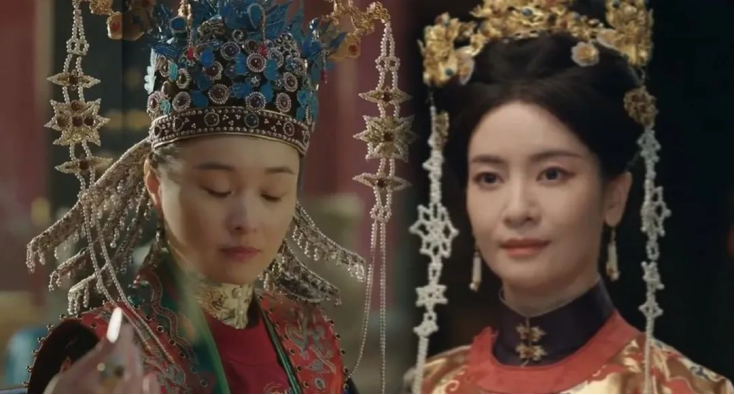
The patterns on the hairpins of the “tiao pai” also vary according to the status and rank. The crowns worn by the empress and the crown princess of the crown prince are called phoenix crowns, while those worn by the imperial consorts of princes, concubines below a certain rank, and the wives of officials with certain ranks are called kingfisher crowns.
In addition, according to the regulations, although the imperial consorts of princes, imperial concubines, and princesses wear kingfisher crowns, the hairpins used to hang the bead knots on them are still in the shape of golden phoenixes. For the imperial consorts of county princes and below, as well as the wives of officials with certain ranks, they use golden kingfishers for the hairpins.
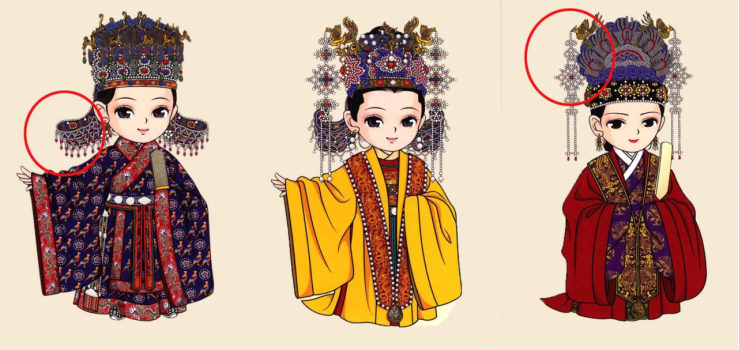
In the picture below, from left to right are a phoenix crown, a casual crown for daily wear, and a kingfisher crown. The two on the left are both worn by the empresses of the Ming Dynasty, and they both have side flaps “bo bin” (博鬓). The two on the right both have the pearl ornaments we talked about today – the “tiao pai”. Is it a bit of a tongue-twister? Haha, in any case, they are indeed very magnificent and beautiful.
Ⅲ. Tiao Pai – Don It for Grand Occasions
Moreover, when wearing tiao pai, if it’s not a significant event like an investiture ceremony or a grand sacrificial ritual, for some less formal ceremonial occasions, there’s no need to pair it with a complete set of head ornaments. Usually, a side flaps “bo bin” adorned with an abundance ornaments is used instead of the crown, with tiao pai hairpins (挑牌簪) on both sides. Especially in paintings from the mid-Ming Dynasty onwards, such a “simplified version” of the combination can often be seen.
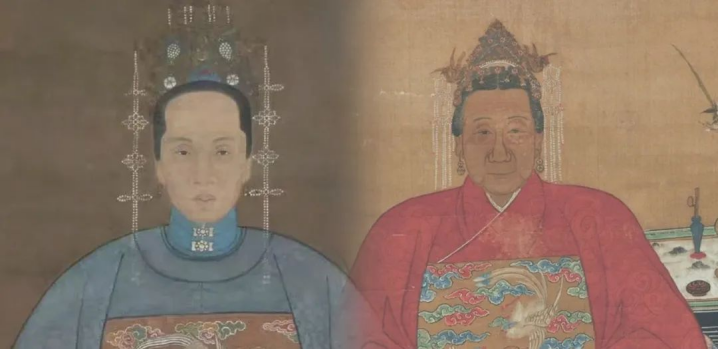
The bead knots of the tiao pai aren’t necessarily of a single color. There are also sophisticated gradient colors. And the patterns aren’t just flowers and plants; there are also various fruits with auspicious meanings, such as peaches and pomegranates. When you take a close look at the peach pattern beneath the tiao pai in the Lanzhou Museum, you’ll find that it’s a “gradient color” composed of gemstones in different but similar hues. You can only appreciate its splendor upon a close inspection.
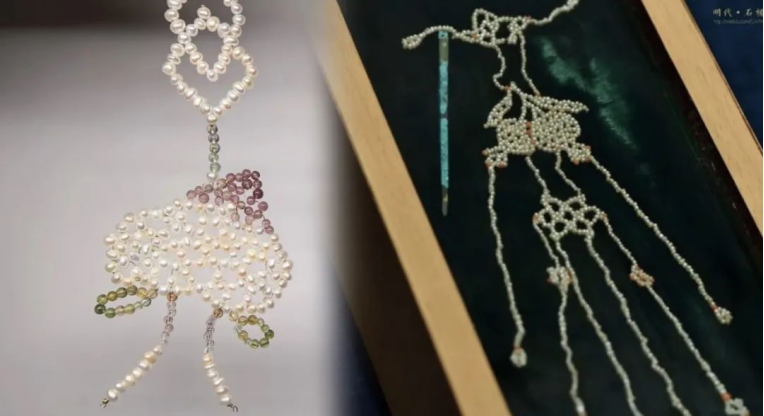
There are numerous patterns on the tiao pai, and each one has some slight differences. Besides plants, the fang sheng pattern (square pattern) is commonly incorporated. The fang sheng pattern is formed by two rhombuses overlapping at their corners, presenting a centrally symmetrical structure.
“Sheng (胜)” was originally an ornament worn by ancient women. It’s said that it was the hair ornament worn by the Queen Mother of the West in ancient mythology. In ancient times, “sheng” was regarded as an auspicious item. For instance, the “golden sheng” recorded in the Book of Song: Records of Auspicious Omens symbolizes grand wishes like national peace and the submission of foreign tribes from all directions.
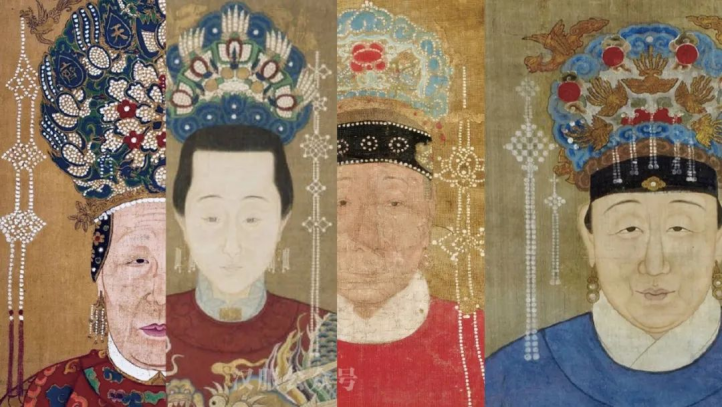
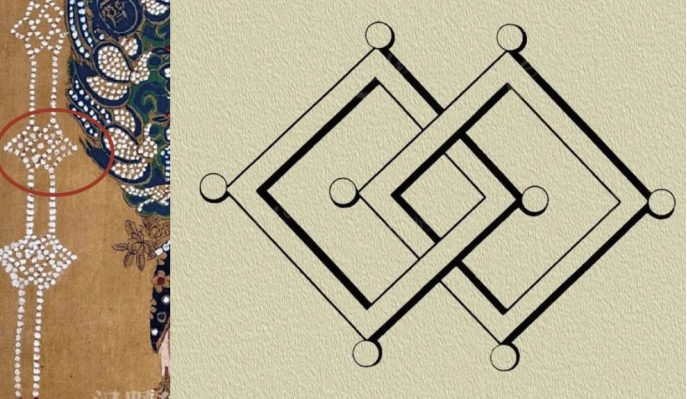
Also, the design on the tiao pai doesn’t have to be a pattern; it can also be characters. For example, this set of tiao pai with the Chinese character “春” (spring) in the Lanzhou Museum features the character “春” strung together with beads.
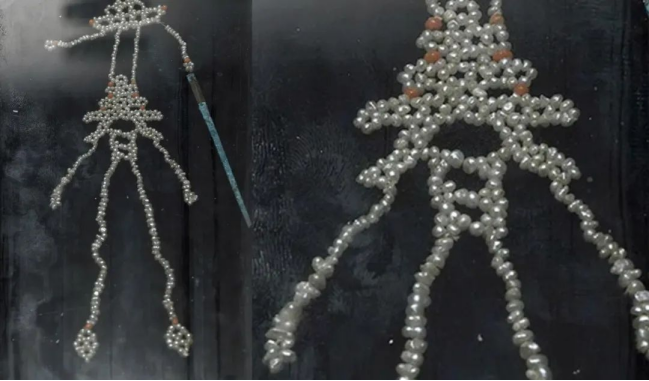
Some people believe that this shape is an inheritance of the pattern of the traditional “spring pennant” accessory, but this cannot be verified. However, spring is a wonderful season, and this kind of design expresses people’s wishes for a better life.
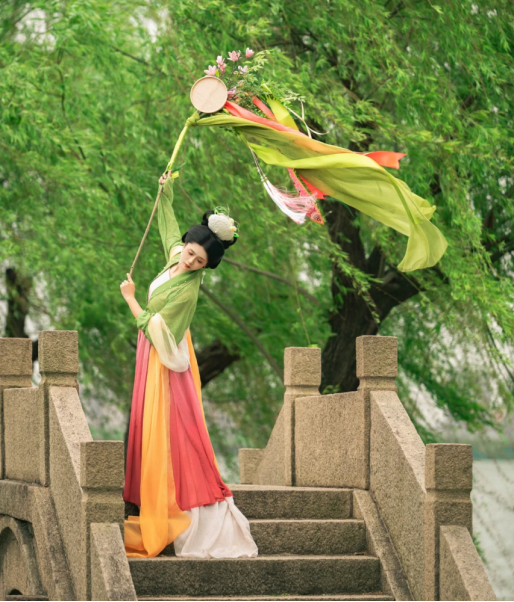
Summary
In paintings with immortal-themed subjects, there are also accessories similar to the tiao pai, and they come in even more diverse patterns. It can be said that these all reflect the Chinese aesthetic capabilities of our ancestors in different combinations!
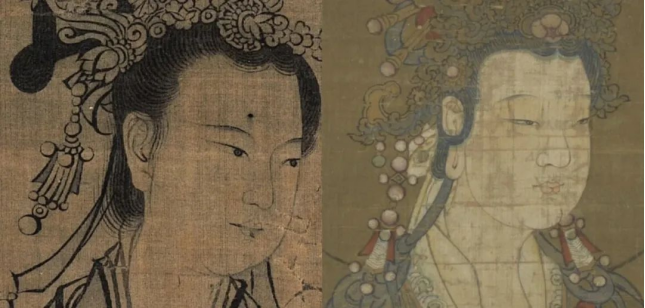
The hua dian (floral forehead decorations) in the Tang Dynasty, the pearl makeup in the Song Dynasty, and the tiao pai in the Ming Dynasty… Chinese aesthetics used to be a widely popular form of aesthetics. This spring, why not give it a try by incorporating these makeup elements characteristic of different dynasties and experiment with new looks!
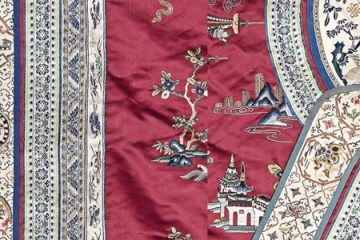
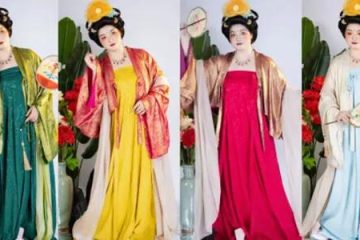
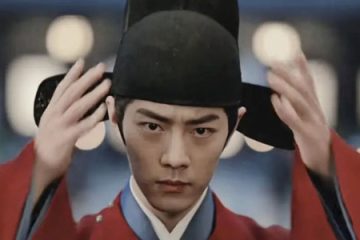
0 Comments